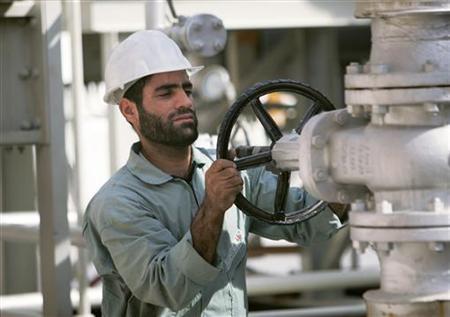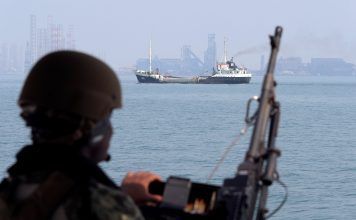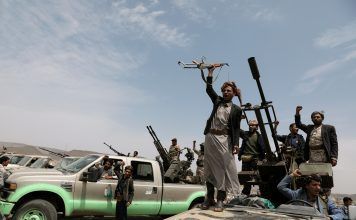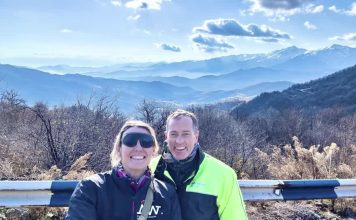By Kayhan Life Staff
A disturbing report from Iran describes the plight of workers who, lacking proper tools and equipment for oil projects, enter the cramped and contaminated spaces of oil rigs to operate turbine starters, used to start large gas turbines that power pumps and generators. These laborers, earning minimal wages, risk their lives each time they enter these hazardous areas, and after several years of exposure, they often experience hearing loss and respiratory illnesses.
A shocking article titled “Humans Replacing Parts,” published on Sept. 17 by the Tehran-based Hammihan newspaper, revealed that some components used in oil extraction platforms were imported many years ago and have not been updated or refurbished.
The report reveals a startling situation in a country with more than a century of oil extraction behind it. Despite possessing substantial oil and gas reserves that should position it among the wealthiest nations globally, the Islamic Republic of Iran has an oil industry that is in dire condition.
Javad Oji, who served as Iran’s Oil Minister from 2021 to 2024, said last March that an investment of $200 billion was required for the oil sector, petrochemicals, and both upstream and downstream industries.
Hammihan reported that on the oil extraction platforms, workers — whether on fixed or full-time contracts – have to take turns entering a small and poorly lit chamber to substitute for a component and to operate the turbine, ensuring that the oil extraction process remains uninterrupted.
ANALYSIS: Iranian Workers Are Driven Into Poverty by Mass Layoffs, Low Pay
In these chambers, the sections allocated for compressors and generators have occupied all available space, leaving no area for a person to enter or be present. However, workers are forced to navigate this chamber with significant difficulty and find a spot for themselves among the equipment.
According to Hammihan, there will be a future where individual workers will function as “components” while electricity is generated or gas is injected into reservoirs to aid oil extraction. Electricity needs to flow like blood through the vital veins of the platforms, with turbines serving as the heart that produces and distributes this energy to extract the valuable resource known as black gold.
The report, focusing on the Salman oil field in the southern province of Hormozgan, noted that several devices housed within the turbine cabin were produced in the 1970s and imported to Iran many years ago. The manufacturers of these devices advise they undergo repairs and servicing every five years, with specific components needing complete replacement every ten years.
The Salman oil field, in the Persian Gulf and 144 km south of Lavan Island, was discovered in 1965 and began operations in 1968. The Iranian Offshore Oil Company (IOOC) manages its development.
An employee in this project told Hammihan: “If you contact the manufacturer and inform them that such a device is still in operation after all these years, they would likely be astonished. There is no guarantee, and these devices could fail at any time. The Ministry of Petroleum must promptly invest in the oil sector to mitigate these potential losses.”
According to this report, all light disappears when the metal door to the chamber closes, and the noise level increases. The heat becomes intolerable, and a turbine must be activated. It is completely dark inside. While there is some light present, it serves no purpose. The compartment is so cramped that only one person can fit in with great difficulty, making it hard to see another individual. Communication with the outside world is only possible through wireless devices.
The report noted that each breath taken feels like fire searing through a person’s lungs, a sensation that continues until the door is opened. Workers alternate their turns to enter the compartment. Until the turbine starts, each worker remains isolated in the same confined rectangular space, where they must contort their bodies to fit into the limited area.
A worker must place one foot on one side of the worn-out equipment while resting his other foot on the opposite side. The generator, compressor, and other machinery are more valuable than the worker’s life. Therefore, they must exercise extreme caution to prevent any damage to the equipment.
According to Hammihan, workers are concerned that they must undertake the repairs themselves if any equipment malfunctions. The task is more manageable for shorter individuals; however, taller individuals must stoop down to access the machinery.
Workers with a heavier build may have to twist their bodies to fit into the machine. Once inside, they sweat profusely, accumulating moisture in their ears and affecting their hearing ability. This scenario can hinder their focus and increase the risk of infection. Workers often remove their earplugs and masks to ease discomfort from the heat.
OPINION: Iran is Rich in Oil and Gas, But Its Citizens Are Impoverished and Severely Repressed
The report noted that workers may experience heat-related fainting if they wear masks. Many individuals who have worn masks for several years report experiencing respiratory issues. Workers describe the sound within their work area as comparable to the noise of an airplane engine during flight. Without earplugs, the noise generated by the turbine can become deafening.
As part of their regular duties, workers face significant risks to their health and safety while replacing malfunctioning and outdated components.
A worker told Hammihan: “Once we enter the chamber, we must perform the initial procedure to start the turbine. We might start the process, but it may fail. In such cases, we must use walkie-talkies so that our partner outside the enclosure can update us on the situation. Typically, the individual inside the turbine cannot comprehend what the operator is communicating from outside because of the noise, and they take necessary actions as soon as they activate the walkie-talkie.”
“When the cabin is sealed, the turbine is initially activated. This turbine must achieve a specific speed for ignition, which falls between 3500 and 4500 revolutions per minute. Simultaneously, the gas and fuel valves must be opened to ensure the turbine continues its rotation. This entire procedure can take anywhere from 30 minutes to 45 minutes, and one individual must remain inside the chamber throughout this duration,” the worker explained.
“The machine is equipped with fire protection systems designed primarily to safeguard the machine itself. To date, there have been no incidents involving personnel; however, if the fire suppression system were to fail even momentarily, the carbon dioxide produced could pose a risk to individuals by lowering the oxygen levels within the chamber,” the worker noted.
“Under standard operating conditions, the chamber is fitted with gas and flame detection sensors, as even a minor gas leak occurring at the time of ignition could lead to an explosion, potentially resulting in severe injuries for anyone inside the device,” the worker said.
“Also, it is well known that airplane engines produce distinct sounds; this turbine operates similarly to those engines. As a result, those of us working within this cabin and compartment may face significant hearing issues after 10 to 12 years of exposure,” the worker remarked.
“Picture yourself inside a confined space where standing is a challenge. We must maintain our balance in an unstable environment with no seating or stable footing. The device lacks adequate space for human occupancy and must operate entirely autonomously. Ideally, this procedure occurs once a week, but under less favorable conditions, it may occur three to four times,” the worker added.














